Episodes
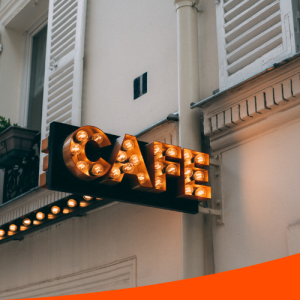
45 minutes ago
45 minutes ago
Bangalore Cafe Market Dynamics: Challenges, Opportunities, and Growth
What are the primary drivers of demand for cafes in Bangalore?
Bangalore's strong demand for cafes stems from its unique demographics and urban landscape. The city, known as India's Silicon Valley, has a large population of young professionals, tech workers, and students. These groups seek cafes for networking, remote work, socialization, and a change of scenery. The growing disposable incomes and exposure to global trends have also led to a significant shift in consumer preferences from traditional tea to coffee, further fueling the demand.
What are the main internal challenges faced by cafe businesses in Bangalore?
Cafe businesses in Bangalore face several internal challenges. Maintaining consistent quality in coffee and customer experience is difficult without standardized processes and proper barista training. Many struggle with operational inefficiencies due to a lack of technology adoption, such as POS systems and inventory management software. High operational costs, especially commercial rents in prime locations, significantly impact profitability, consuming 15-25% of revenue. Additionally, high competition and demanding work conditions make it challenging to retain skilled staff, leading to increased training costs and service disruptions.
What are the key opportunities for growth and improvement in Bangalore's cafe market?
The Bangalore cafe market presents significant opportunities for growth. The Indian coffee chain market is projected to nearly double from $160.6 million in 2023 to $323.8 million by 2033, indicating a strong potential for market expansion. Adopting technology like POS systems, online ordering platforms, and loyalty programs can streamline operations and enhance customer engagement. Collaborations with local businesses or influencers and strategic social media marketing can boost visibility. Furthermore, menu innovation, by introducing trending items like plant-based options or fusion dishes, can attract diverse customer segments and keep the offerings fresh.
What are the major external threats to cafe businesses in Bangalore?
Cafe businesses in Bangalore face intense external threats. The market is highly competitive, with established chains like Cafe Coffee Day and Starbucks alongside numerous independent cafes, many of which struggle to survive beyond 18 months. Rising commercial rents, projected to increase by 5-7% in 2025, particularly in prime areas, squeeze profit margins. Fluctuating ingredient costs, especially coffee beans, and issues like food wastage further impact profitability. Constantly evolving consumer preferences demand continuous menu and experience innovation. Economic downturns or reduced disposable income also pose a risk to consumer spending on dining out.
How does Bangalore's coffee culture compare to India's traditional tea-drinking habits?
Bangalore is experiencing a significant shift in consumer preferences towards coffee culture, moving away from India's traditional tea-drinking habits. This change is driven by rising disposable incomes, urbanization, and increased global exposure. While tea has historically been the dominant beverage, the growing demand for coffee is evident in the Indian coffee market's valuation of $1.81 billion in 2023, supporting the expansion of cafes. This indicates a strong and growing appreciation for coffee among Bangalore's urban population.
What role does technology play in the success of cafes in Bangalore?
Technology plays a crucial role in the success of cafes in Bangalore by addressing operational inefficiencies and enhancing customer engagement. Adopting tools such as Point of Sale (POS) systems, online ordering platforms, and loyalty programs can streamline various aspects of the business. These technologies improve efficiency in operations, help manage inventory, reduce delays, and optimize costs. They also enhance the customer experience by simplifying ordering processes and fostering customer loyalty through reward programs, which is vital in a competitive market.
What are some strategic recommendations for cafe owners to thrive in Bangalore's market?
To thrive in Bangalore's competitive cafe market, owners should focus on several strategic areas. Investing in quality control through standardized brewing techniques and staff training is essential for consistency. Leveraging technology, such as POS systems and online platforms, can streamline operations and improve customer experience.
How do rental costs impact the profitability of cafes in Bangalore, particularly in prime locations?
Rental costs significantly impact the profitability of cafes in Bangalore, especially in prime locations like Koramangala, Indiranagar, and MG Road. Commercial rents in these areas can range from ₹80-125 per square foot per month and typically consume a substantial 15-25% of a cafe's total revenue

3 days ago
3 days ago
What are the primary strengths of establishing a cafe business in Ho Chi Minh City (HCMC)? HCMC offers several key strengths for cafe businesses, including a robust local coffee culture where coffee is the most preferred beverage, accounting for 39.6% of purchases. Vietnam, as the world's second-largest coffee producer, provides easy access to high-quality, locally sourced coffee beans, reducing import reliance and costs. The cafe industry in HCMC is also a growing market, with revenue estimated at $1.46 billion in 2023, reflecting a 13.3% increase from 2022. Additionally, cafes can cater to a diverse customer base of locals, expatriates, and tourists, and a strong focus on quality drives customer satisfaction and brand loyalty.
What are the main weaknesses faced by cafe businesses in HCMC? Cafe businesses in HCMC encounter significant weaknesses, such as intense competition from major chains like Highlands Coffee (240 stores in 2018) and The Coffee House (140 stores). High operational costs, particularly rental prices in prime locations averaging $273 per square meter per month in 2024, also pose a substantial financial burden. New cafes often struggle with brand recognition in a market dominated by established players and are heavily reliant on foot traffic, which can be easily disrupted by external factors like weather or health crises.
What opportunities exist for new cafes to thrive in HCMC? New cafes in HCMC can leverage several opportunities. These include expanding into underserved districts with moderate to high population density but fewer coffee shops, such as District 12 and Thu Duc City, which may also offer lower rental costs. Innovation and differentiation through unique concepts like specialty coffee, eco-friendly practices, or themed cafes can attract younger consumers. Additionally, utilizing technology for online ordering and delivery services and leveraging social media marketing can enhance customer reach. The post-pandemic recovery and the city's growing middle class, with increasing disposable incomes, also support increased spending on premium coffee experiences.
What threats could impact the success of cafes in HCMC? Cafe businesses in HCMC face several threats, including economic instability, which can reduce consumer spending on non-essential items. Volatile coffee bean prices, which reached up to 123,500 VND per kilogram in June 2025, can significantly squeeze profit margins. Regulatory changes or tax increases could raise operational costs. Shifting consumer preferences, such as a growing demand for healthier beverages or non-coffee options like bubble tea, could reduce demand for traditional coffee. Finally, health crises or natural disasters, as demonstrated by the COVID-19 pandemic, can disrupt operations and force businesses to adapt to takeaway and online channels.
How does HCMC's coffee culture and market growth contribute to the cafe industry? HCMC's deeply ingrained coffee culture means coffee is the most preferred beverage among locals, ensuring consistent demand for cafes as social hubs. This strong cultural foundation is coupled with significant market growth, with the coffee shop market revenue estimated at $1.46 billion in 2023, reflecting a 13.3% increase from 2022. The market is also projected to grow at a CAGR of 8.13% to reach $816.81 million by 2030, indicating a continuously expanding consumer base eager for coffee experiences.
Why is quality a crucial factor for customer satisfaction and loyalty in HCMC's cafe market? Research highlights that quality is the most significant factor influencing customer satisfaction in HCMC’s chain coffee shops, even more so than price. High customer satisfaction is strongly correlated with brand loyalty in HCMC, surpassing its impact in Hanoi. This suggests that while competition is intense, cafes that prioritize and consistently deliver high-quality products and services are more likely to build a loyal customer base and achieve long-term success.
How can new cafes strategically address the intense competition and high operational costs in HCMC? New cafes can address intense competition and high operational costs through strategic planning. One key recommendation is to consider opening in underserved districts like District 12 or Thu Duc City, where population density is moderate, competition is less fierce, and rental costs may be lower than in central areas. Furthermore, focusing on differentiation through unique offerings (e.g., specialty coffee, eco-friendly practices, or culturally resonant themes) can help a new cafe stand out from established chains. Cost management through negotiating favorable lease terms and optimizing supply chain management to mitigate rising coffee bean costs are also crucial.
#hcmcity #vietnam #cafe #business #starbucks #costacoffee #dowellresearch #samanta
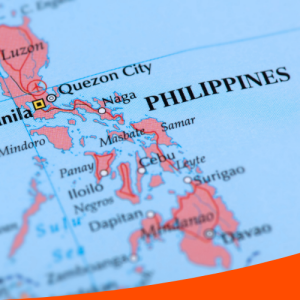
6 days ago
6 days ago
What are the main strengths of the cafe business in Manila?
Manila's cafe business is bolstered by a robust coffee culture, with 80% of Filipinos consuming an average of 2.5 cups daily, ensuring consistent demand. The Philippine economy is projected to grow by 6% in 2025, increasing disposable incomes for discretionary spending. Tourism is also surging, expected to support 11.7 million jobs in 2025, offering significant opportunities for cafes in tourist areas. Additionally, the Philippines is the 14th largest global coffee producer, offering unique local varieties like Liberica (Barako), which can be a distinct selling point. The industry also benefits from a strong sense of community and a focus on quality, amplified by social media.
What are the primary weaknesses faced by cafes in Manila?
Despite its strengths, the Manila cafe business faces several weaknesses. Opening a coffee shop can incur high initial investments, up to $375,000, posing a significant financial barrier. There's also a dependence on imported coffee beans due to challenges in meeting local demand, which can lead to increased costs and vulnerability to global supply chain disruptions. The market is intensely competitive, with a high density of both independent and chain coffee shops. Furthermore, operating in prime locations like Makati or Bonifacio Global City involves high rental costs, impacting profitability.
What significant opportunities exist for cafe businesses in Manila?
The foodservice market in Manila, including cafes, is projected to grow from $18.41 billion in 2025 to $36.27 billion by 2030, presenting substantial expansion opportunities. There's a growing demand for innovative offerings like specialty coffee and unique brewing methods (e.g., cold brew, AeroPress). Cafes can also leverage the tourism boom by offering cultural or themed experiences. Opportunities exist to partner with local coffee producers for authenticity and reduced import reliance. A rising consumer preference for sustainable and ethically sourced coffee, as well as the growing demand from younger demographics (Gen Z and millennials), also offer avenues for growth and targeting specific customer segments.
What threats should cafe owners in Manila be aware of?
The cafe market in Manila faces threats from intense competition and potential market saturation due to the high number of existing coffee shops, necessitating continuous innovation. Economic downturns, influenced by global uncertainties, could reduce consumer spending on non-essential items like cafe visits. Supply chain disruptions, caused by factors such as climate change or coffee rust disease, could impact bean availability and costs. Shifting consumer preferences towards alternative beverages or health trends (e.g., reduced caffeine) could also affect demand. Additionally, the Philippines is prone to natural disasters, which can disrupt operations and supply chains, and potential regulatory changes or new taxes could increase operational costs.
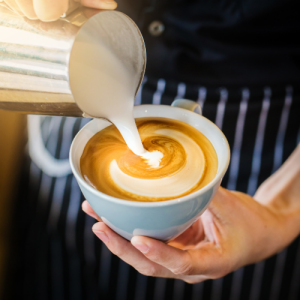
7 days ago
7 days ago
1. What are the primary advantages for a cafe operating in Clarke Quay, Singapore?
Cafes in Clarke Quay benefit significantly from its prime location, which ensures high visibility and accessibility due to its proximity to the Singapore River, MRT stations, and the Central Business District. This draws in a consistent stream of both tourists and locals, particularly during evenings and weekends. The area also boasts a vibrant atmosphere, blending historical charm with modern amenities, offering cafes with riverfront views or aesthetically pleasing interiors a unique appeal that encourages longer customer dwell times. Furthermore, Clarke Quay attracts a diverse customer base, including international tourists, local residents, and office workers, allowing cafes to cater to various segments throughout the day and support broad market offerings.
2. What are the main challenges faced by cafes in Clarke Quay?
Operating a cafe in Clarke Quay presents several significant challenges. High rental costs are a major burden, with commercial spaces costing between S$7 to S$11 per square foot per month, which can severely erode profit margins. The area also suffers from intense competition, with a dense concentration of F&B establishments requiring cafes to heavily differentiate themselves through unique offerings or superior service. Additionally, staffing challenges are prevalent due to Singapore's competitive labor market, making it difficult to recruit and retain skilled staff. High labor costs and turnover rates can disrupt service quality, which is critical in a customer-centric industry.
3. What opportunities can cafes in Clarke Quay capitalize on for growth?
Cafes in Clarke Quay have several key opportunities for growth. The booming tourism industry in Singapore, projected to welcome 17-18.5 million visitors in 2025, positions Clarke Quay cafes to capture a significant influx of customers, especially high-spending tourists from markets like China and India. Menu innovation is another opportunity, with trends towards premiumization, specialty coffee, artisanal brews, plant-based options, and Instagrammable dishes attracting discerning customers. Technological integration, such as online ordering, loyalty apps, AI-driven analytics, and automation like self-service kiosks, can enhance efficiency and customer engagement. Finally, cafes can boost sales during peak periods by participating in the frequent events and festivals held in Clarke Quay through special promotions or themed menus.
4. What external threats could negatively impact cafes in Clarke Quay?
External threats to cafes in Clarke Quay include economic fluctuations, which can reduce consumer spending on discretionary activities like dining out, as seen with cautious consumer sentiment in 2023. Changing consumer preferences, such as a growing demand for healthier, sustainable, or plant-based food options, require cafes to adapt quickly to avoid losing market share. Increased competition from new cafe entrants or the expansion of existing chains, including foreign brands with significant financial backing, can erode market share for local cafes. Lastly, regulatory changes, such as stricter food safety standards, labor policies, or rising rental costs driven by demand from foreign brands, can increase operational costs and threaten profitability.
5. How does Clarke Quay's atmosphere contribute to the success of cafes?
Clarke Quay's atmosphere significantly contributes to the success of cafes by offering a unique and vibrant dining experience. The blend of historical warehouses and modern amenities creates an aesthetic appeal that cafes with riverfront views or "Instagrammable" interiors can leverage to attract customers seeking memorable experiences. The lively ambiance, particularly at night, complements the cafe culture, encouraging customers to stay longer and enjoy their surroundings, thereby potentially increasing spend per visit.
6. In what ways can cafes differentiate themselves in Clarke Quay's competitive market?
To differentiate themselves in Clarke Quay's intensely competitive market, cafes must go beyond standard offerings. This can involve menu innovation, such as introducing unique specialty coffee blends, artisanal brews, plant-based options, or culturally inspired dishes (e.g., Malaysian-inspired menus). Creating "Instagrammable" dishes or experiential dining concepts can also boost social media visibility and attract a specific clientele. Furthermore, combining dining with other experiences, like music (as seen with Swee Lee Clarke Quay), can help a cafe stand out. Superior customer service and efficient operations, possibly aided by technological integration, are also crucial for differentiation.
7. How do high rental costs specifically impact profitability for cafes in Clarke Quay?
High rental costs in Clarke Quay significantly impact profitability by consuming a large portion of a cafe's revenue. Commercial spaces in the area cost S$7 to S$11 per square foot per month, meaning a 1,000-square-foot cafe could face monthly rents of S$7,000 to S$11,000. Reports suggest that rentals can account for up to 26% of F&B revenue, leaving very slim profit margins, particularly for new or smaller establishments. This substantial fixed cost makes it challenging for cafes to achieve and maintain financial viability.
8. What role does technology play in mitigating weaknesses and capitalizing on opportunities for cafes in Clarke Quay?
Technology plays a crucial role in mitigating weaknesses and capitalizing on opportunities for cafes in Clarke Quay. For weaknesses like staffing challenges and high labor costs, automation (e.g., self-service kiosks) can reduce the reliance on manual labor and improve service speed. For opportunities, technological integration through online ordering platforms and loyalty apps can enhance customer engagement and convenience. AI-driven customer analytics can provide insights to tailor offerings and improve efficiency. This adoption of technology aligns with industry trends and helps cafes stay competitive by improving operational efficiency and overall customer experience.
convert_to_textConvert to source
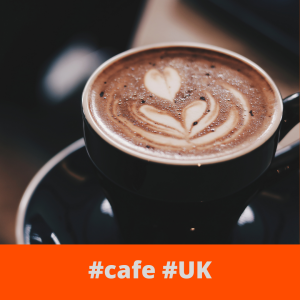
Tuesday Jun 24, 2025
Tuesday Jun 24, 2025
London Cafe Business - a SWOT Analysis
What is the current state and projected growth of the cafe market in London, UK?
The cafe market in London, UK, is a significant part of a larger UK cafe and bars market, estimated at USD 33.95 billion in 2025. This market is projected to grow to USD 43.72 billion by 2030, with a Compound Annual Growth Rate (CAGR) of 5.18%. London's cafe scene is a major contributor to this growth, characterized by a vibrant coffee culture and an increasing daily coffee consumption, reaching 98 million cups in 2024. What are the key internal strengths that contribute to the success of cafes in London? Benefit from several internal strengths: a robust coffee culture with high daily consumption; diverse market offerings from major chains to independent specialty cafes catering to various preferences; the provision of unique customer experiences through cultural activities like live music and art exhibitions; a strong emphasis on sustainability and ethical sourcing, aligning with consumer demand; and the effective integration of technology, such as mobile apps and AI, to improve operations and personalize customer interactions.
What are the main weaknesses and challenges faced by cafe businesses in London?
Cafe businesses in London face significant weaknesses, including high operating costs, particularly commercial rents ranging from £100,000 to £500,000 annually and substantial staffing costs. The market is also characterized by intense competition, with over 10,000 branded coffee shop outlets across the UK, leading to potential saturation in central London areas. Additionally, cafes are vulnerable to economic sensitivities, as coffee shop visits are often considered non-essential spending, and they face dependence on coffee imports, which exposes them to price volatility and supply chain disruptions.
What emerging opportunities can cafes in London leverage for growth?
London cafes have several opportunities: the expanding specialty coffee segment, driven by consumer interest in unique beans and brewing techniques; increasing health and wellness trends, leading to demand for decaf, plant-based milks, and superfood lattes; the potential for expansion and franchising, as seen with major chains; the strategic use of digital marketing and online presence to enhance visibility; and the benefits of collaborations and community engagement through partnerships and local events to increase footfall and brand recognition.
What external threats pose risks to the cafe industry in London?
Rising coffee prices, which reached a 15-year high in 2024 with potential for further increases due to climate impacts, threaten profit margins. Competition from non-coffee outlets like bubble tea chains and juice bars is diversifying consumer spending. Economic uncertainty, including the cost-of-living crisis and high inflation, is reducing consumer spending and limiting new outlet growth. Potential regulatory changes related to health, safety, or environmental standards could increase operational costs. Lastly, shifts in consumer preferences, such as increased home coffee consumption or preference for ready-to-drink coffee, could reduce cafe visits.
How do high operating costs in London compare to other UK regions?
Operating a cafe in London is significantly more expensive than in other UK regions, primarily due to commercial rents. In prime London areas, annual commercial rents typically range from £100k to £500k. In contrast, commercial rents in other UK regions are considerably lower. These higher rents, coupled with barista wages and other staffing costs, substantially strain profit margins for London cafes, which generally fall between 5% and 15%. What role does technology play in the London cafe market? London cafe market by improving operational efficiency and personalizing customer experiences. Cafes are adopting mobile apps, cloud-based POS systems, and even AI-powered coffee machines. For instance, data analytics derived from these technologies enable cafes to offer tailored recommendations to customers based on their past preferences, enhancing customer engagement and loyalty in a competitive environment.
What strategic recommendations are suggested for cafes to thrive in London's dynamic market?
To thrive, London cafes are recommended to: leverage the growth in specialty coffee by investing in high-quality, traceable beans; enhance the customer experience by offering unique events and comfortable spaces to establish cafes as social hubs; adopt cost-saving measures, such as using second-hand furniture or leasing equipment, to mitigate high operating costs; diversify their offerings to include health-focused and non-coffee beverages to attract a broader market; and strengthen their digital presence through social media and online platforms to improve visibility and customer loyalty
#business #cafe #uk #london #starbucks #costacoffee #gregg #coffee #tea
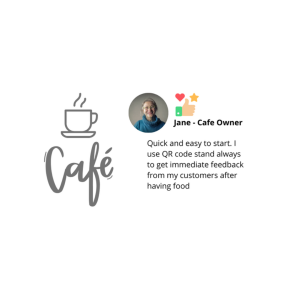
Monday Jun 23, 2025
Monday Jun 23, 2025
What are the primary strengths of the cafe business in Kochi, India?
The cafe business in Kochi benefits from several key strengths, including its strong tourist attraction as a major hub with millions of visitors annually, particularly in areas like Fort Kochi. The city's rich cultural scene, featuring art galleries and events like the Kochi-Muziris Biennale, also draws diverse crowds to cafes, especially those with artistic themes. Cafes offer diverse culinary options, from continental to local, along with unique themes like vegan-friendly choices. Many cafes enhance customer experience with appealing ambiances, often located in scenic or historical settings. There's a growing appreciation for specialty coffee among locals and tourists, fueled by urban lifestyles and supported by Kerala's economic growth, which has led to higher disposable income. Additionally, local coffee production in Kerala provides access to high-quality, locally sourced beans, which can reduce costs and appeal to customers who value local products.
What are the main weaknesses faced by cafes in Kochi?
Cafes in Kochi face several significant weaknesses. High competition is a major challenge, with approximately 150 coffee shops listed, especially in tourist hotspots like Fort Kochi, making it difficult for new entrants to thrive. The industry also experiences seasonal fluctuations, as revenue is heavily dependent on tourist seasons, leading to peak periods during tourist months and potential slumps off-season. The cost of operation, particularly high rental costs in prime locations such as Fort Kochi or near malls like Lulu Mall, significantly impacts profitability. Furthermore, an over-reliance on tourism, especially with foreign arrival numbers still below pre-pandemic levels, makes cafes vulnerable to downturns in the tourism sector.
What opportunities exist for cafe businesses in Kochi to grow and adapt?
Several opportunities can foster growth and adaptation for cafe businesses in Kochi. Catering to niche markets, such as vegan, organic, or health-conscious cafes, can attract underserved customer segments. Local collaborations with artists or cultural events like the Kochi-Muziris Biennale can boost visibility and footfall. There's also potential for expansion into residential or business districts like Ernakulam or Kakkanad to tap into local demand beyond tourist areas. Leveraging online presence and food delivery apps like Zomato or Swiggy can significantly expand customer reach. Adopting sustainable practices, such as using biodegradable materials or local ingredients, aligns with global trends and attracts environmentally conscious consumers. Finally, creating work-friendly spaces with reliable Wi-Fi and conducive environments can attract remote workers and digital nomads.
What are the primary threats that could impact the cafe industry in Kochi?
The cafe industry in Kochi faces several notable threats. Economic downturns, which lead to reduced disposable income for consumers, can result in fewer cafe visits and lower revenue. Changing consumer preferences, such as shifts toward healthier or alternative beverages, could challenge traditional cafe menus. New food safety or business regulations may increase operational costs or complexity for cafes. Intense competition from global and domestic chains like Starbucks and Café Coffee Day, which possess strong brand recognition, poses a significant threat of market share loss. Lastly, health crises like pandemics can disrupt operations through lockdowns or reduced footfall, as experienced during COVID-19. How does Kochi's market context influence its cafe industry? Kochi's market context significantly influences its cafe industry due to the city's status as a major tourist and cultural hub. With millions of tourists visiting annually, cafes benefit from high footfall. While domestic tourism has recovered and surpassed pre-pandemic levels, foreign tourism still lags behind 2019 figures, impacting cafes that rely heavily on international visitors. The global cafe market is projected to grow substantially, suggesting a positive outlook for Kochi's cafes if they can adapt to emerging trends like sustainability and digital integration. The city's economic growth, indicated by a rising GSDP and per capita GSDP in Kerala, also contributes to higher disposable income, supporting leisure activities like cafe visits.
#starbucks #cafecoffeeday #costacoffee #macdonald

Friday Jun 13, 2025
Friday Jun 13, 2025
This case study demonstrates our ability to address complex research challenges with precision and innovation. By integrating Samanta AI for respondent recruitment, and DoWell Maps for sampling, we enhanced the Home Usage Test’s effectiveness. This approach delivered high-impact insights for the client’s toothpaste launch, tailored to Brazil’s diverse market, and established a scalable framework for future FMCG projects.







